

Unkover your competitors’ Marketing Secrets
Say goodbye to wasting hours on competitor analysis by equipping your team with an AI-driven, always-on competitive intelligence platform.


Say goodbye to wasting hours on competitor analysis by equipping your team with an AI-driven, always-on competitive intelligence platform.

Stay Ahead with AI-DRIVEN Competitive Intelligence
Unkover is your AI-driven Competitive Intelligence team delivering critical updates about your competitors the moment they happen:
Track your competitors website changes
Why spend all day stalking the competition when you don’t have to?
With Unkover, you’ll know instantly when your competitors tweak their messaging or shake up their pricing. No more endless scrolling through their sites or second-guessing your strategies.
Let us do the heavy lifting for you, ensuring you’re always in the loop by notifying you the moment a critical change happens on your competitor’s pages.
Sit back, relax, and keep winning—Unkover makes sure you’re not just in the game, you’re always a step ahead.


Read your competitors emails
Companies love updating their customers and prospects about relevant news, product updates, and special offers.
That juicy info from your competitors? It’s yours too. Unkover will automatically capture all their emails and bring them right to your doorstep—accessible to your entire team, anytime.
[COMING SOON: Our fine-tuned AI will sift through these emails, extract key information and send them over to the best team within your org. Less noise, more signal!]
We hear you! Unkover’s goal is not to flood you with tons of data points that no one in your team will ever read. We gather competitive intelligence from thousands of data sources and use AI to highlight actionable information to the right team in your company.
Say goodbye to noise. We’re 100% signal.
ROADMAP
We’re excited to get Unkover in your hands as soon as possible and keep building the best competitive intelligence tool with your precious feedback. The roadmap for the next few months is already exciting, so take a look!
While we build and deliver, here’s our promise to you: as an early tester and customer, you’ll lock in an exclusive bargain price we’ll never offer again in the future.

Spy on your competitors’ full marketing strategy: social, ads, content marketing, email flows, and more.

Track competitive Win/Loss analysis and build battle cards. Get alerted at every pricing change.

Get immediate alerts when competitors announce new features or major releases. Identify strengths and weaknesses from online reviews.

Get the competitive intelligence you need where you need it: Slack, eMail, MS Teams, Salesforce, Hubspot, Pipedrive and more.
slack integration
Unkover’s Slack integration lets you keep your whole team up to speed with your competitors’ updates.

Join now to lock in an exclusive 50% lifetime discount
For startups and small teams, it’s the essential toolkit you need to keep an eye on a select few competitors.

Up to 5 competitors

50 pages monitored

10 email workflows

3-day data refresh
$39
/per month
$ 79
50% discount
Billed annually
For growing businesses, it allows you to monitor more competitors, pages, and email workflows.

Up to 10 competitors

100 pages monitored

20 email workflows

1-day data refresh
$79
/per month
$ 159
50% discount
Billed annually
For large companies, it is tailored to meet the needs of multiple teams needing granular insights.

Custom number of competitors

Custom number of pages monitored

Custom number of email workflows

Hourly data refresh
Custom price
Billed annually

Sometimes it feels like there are a million and one marketing platforms to keep up with.
Email. Social media. PPC campaigns. Content marketing. SEO. SMS marketing.
There’s a lot to consider, and there are so many tasks that marketers need to keep track of. It can be exhausting, stressful, and time-consuming, and as you’re working with a team, it’s easy for things to fall between the cracks.
Assembling a strong marketing tech stack, therefore, is crucial, especially as you scale over time. And in this post, we’re going to go over how to assemble a killer marketing tech stack that will carry you forward in 2023, including sharing recommendations for marketing tools you need.
Every business’s marketing tech stack will be unique because its needs are sure to be unique.
That being said, there are eight types of tools that most businesses (especially SaaS and B2B businesses!) need for their marketing tech stack. Let’s take a look at the marketing tool categories you need and our top recommendation for each.
Product analytics are essential for SaaS brands, as they show you how users are utilizing your tool.
Which features are they using? How often are they logging in and engaging? Are they hitting the upper limits of their plan, or are they failing to use it for all it’s worth?
Site analytics tools are also essential. These analytics tools will show you what’s happening on your website—including how users progress through the site, how quickly they leave it, and where they’re coming from. Also, website uptime, ping check, and active or proactive monitoring.
Both are essential for SaaS brands because they can help the marketing team understand your users and what features they value most. The actionable data can also help you create marketing campaigns designed to keep users engaged or to push them through the lead nurturing process.
Google Analytics is free, and it’s a must-have for every business online. It will help provide information on who your audience is, where they’re coming from, how they’re interacting with your site, and how much revenue is being generated.
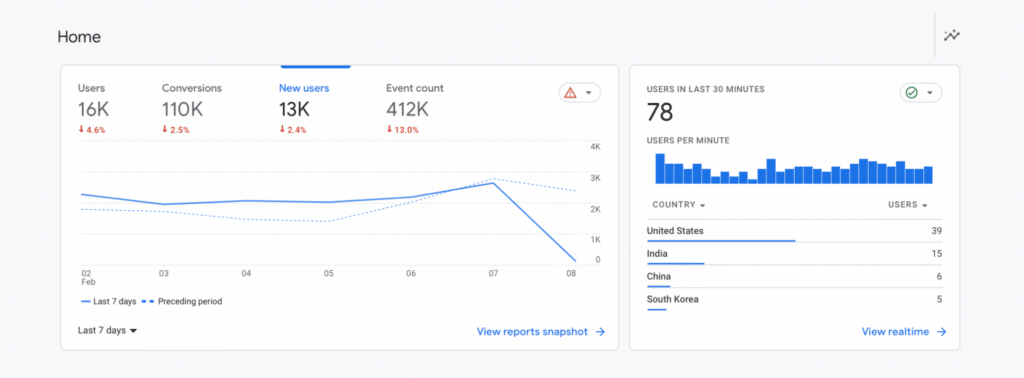
We have compiled a list of product analytics tools we swear by and Userpilot is another great product analytics tool that can help you map the user journey through your SaaS tool. It also has outstanding features like personalized user onboarding, in-app marketing capabilities, and product adoption assistance, making it a great choice.
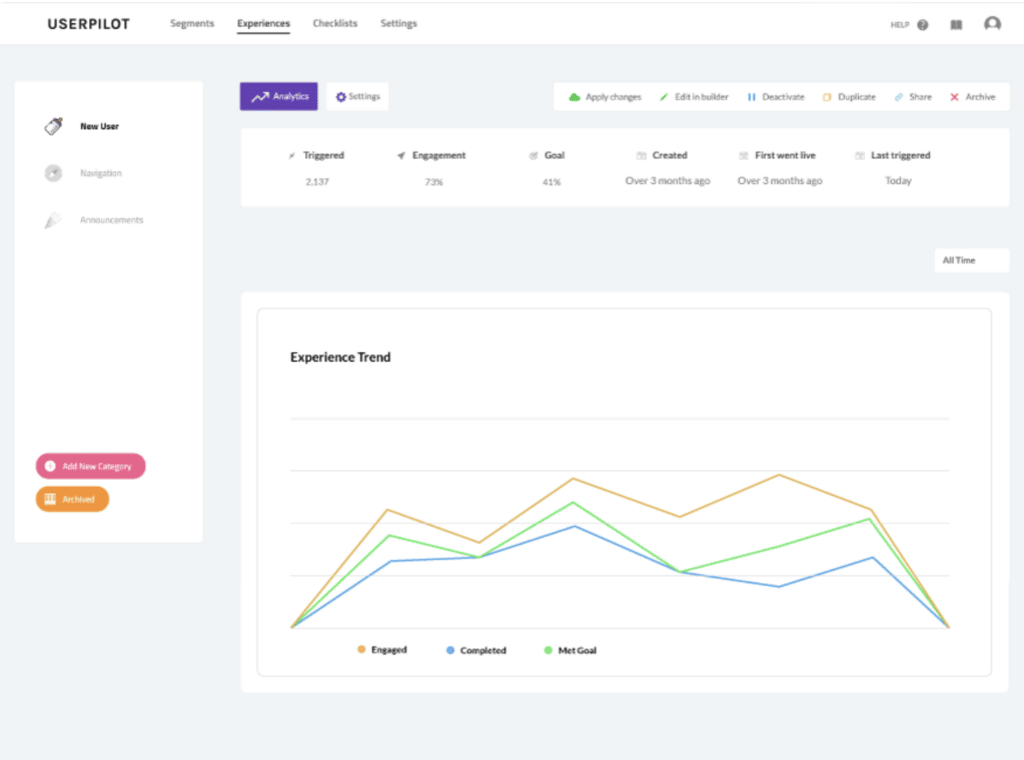
You need email marketing software. I don’t care what type of business you run: This should be a priority when choosing your marketing tech stack.
Email marketing software makes it easier for you to build, segment, and reach out to lists of audiences throughout every stage of the sales funnel. Most come with outstanding features that make it easy to create dynamic emails, strong segmented, automated campaigns, and tests.
HubSpot is certainly a leader in the market and a complete marketing automation software ranging from email marketing to sales pipeline to lead scoring. The tool provides an all-in-one solution for businesses of all sizes, from start-ups to enterprise organizations. It integrates with over 300 third-party apps and makes it easy to manage contacts and track progress even on the go.
Mailchimp is a personal favorite, and it’s what I recommend for most of my clients’ marketing tech stacks. It’s easy to use, which is not true for all email marketing software on the market, and it has all the features you could possibly need. The segmentation features are particularly simple to set up, and it has outstanding integrations for most major platforms.

You need to understand who your audience is and what your ideal customer profile (ICP) looks like. Without this, you could be going off of a general idea, but that’s enough to cause you to flounder.

Ebook
Ideal Customer Profile (ICP) Worksheet
Learn how to create an Ideal Customer Profile and build a successful sales strategy with this Ideal Customer Profile (ICP) Worksheet.
Audience analytics tools must be detailed and be able to provide strong insights with pattern detection, helping you to really understand who your highest-value audiences are and potentially how to reach them.
Breadcrumbs is a co-dynamic lead scoring tool, and our sister product Reveal (which is available on all free Breadcrumbs accounts), can take the data we’re using to score leads to help you better understand your ICP. We’ll compare your highest-value audience members to your general clients and contacts to determine what they have in common, giving you clear and actionable insights.
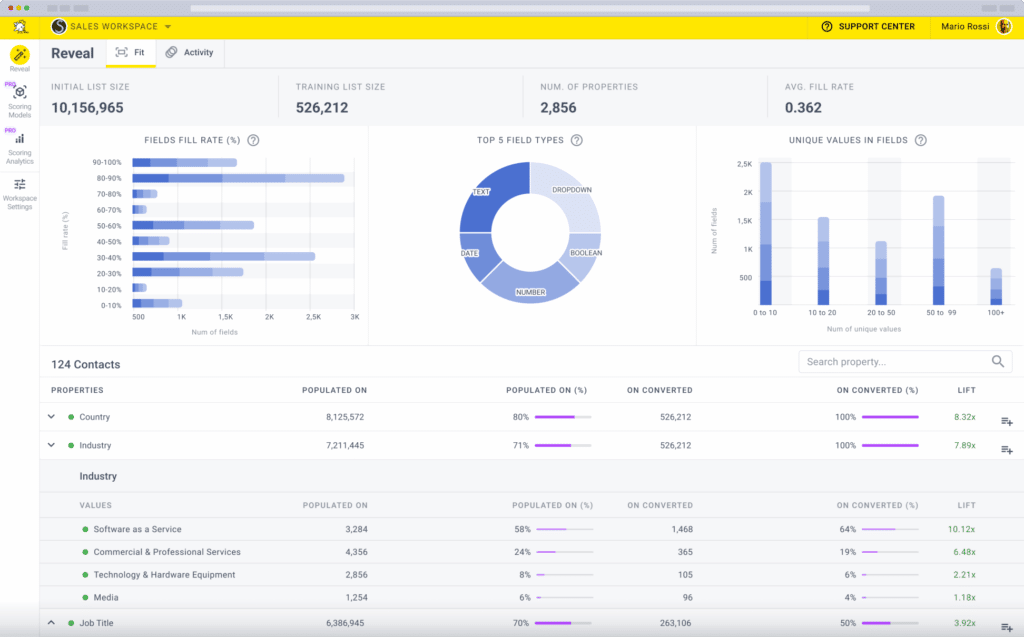
You can sign up for Breadcrumbs and Reveal for free here.
Social media management software can be a lifesaver, no matter how large or small your business is, especially since there are so many social media platforms to keep up with.
Most social media management tools will have features like the following:
Sprout Social is one of the strongest social media management tools available in 2023. It has an incredibly intuitive interface, which many of its competitors (in my opinion) do not. It makes scheduling simple, especially since it also has extraordinarily detailed analytics to help you track performance. It also has great features for customer support, data intelligence, and social commerce.
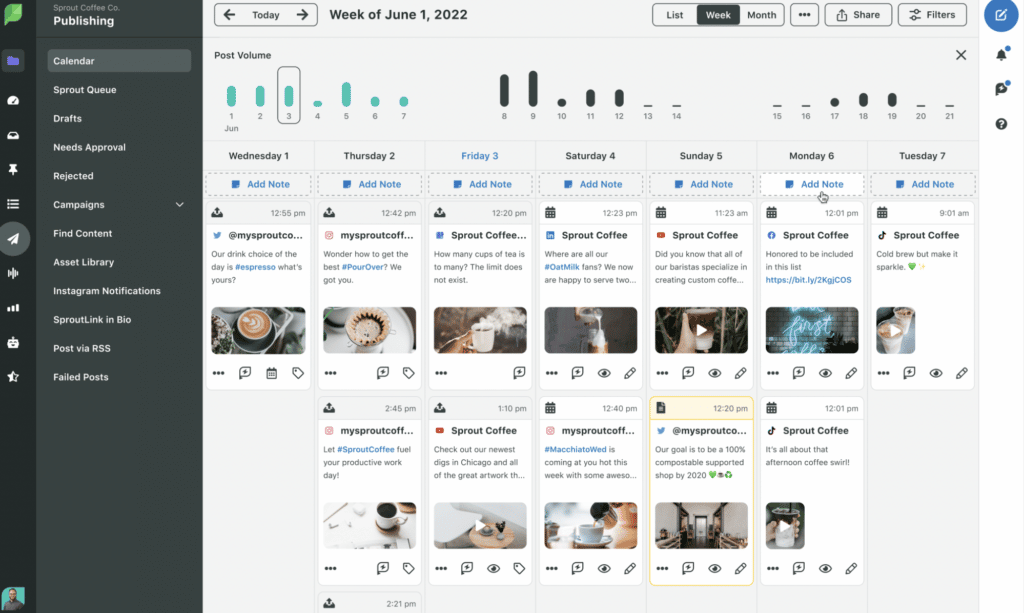
You need SEO tools to optimize your website, optimize your content, and understand how you’re ranking (and how to improve it). In many cases, SEO-focused tools come with advanced keyword research features that can also be used for Google Ads keyword research if you choose.
SEO-focused tools should, at minimum, have the following:
There are a lot of really amazing keyword research tools out there, including SurferSEO, Moz, and Ahrefs, but my go-to will always be Semrush.
Semrush has everything I need as a content marketer, helping my clients develop content strategies, put together plans, and optimize content while tracking its performance after the fact. They also have an SEO writing assistant that can help you optimize your content as you’re writing.
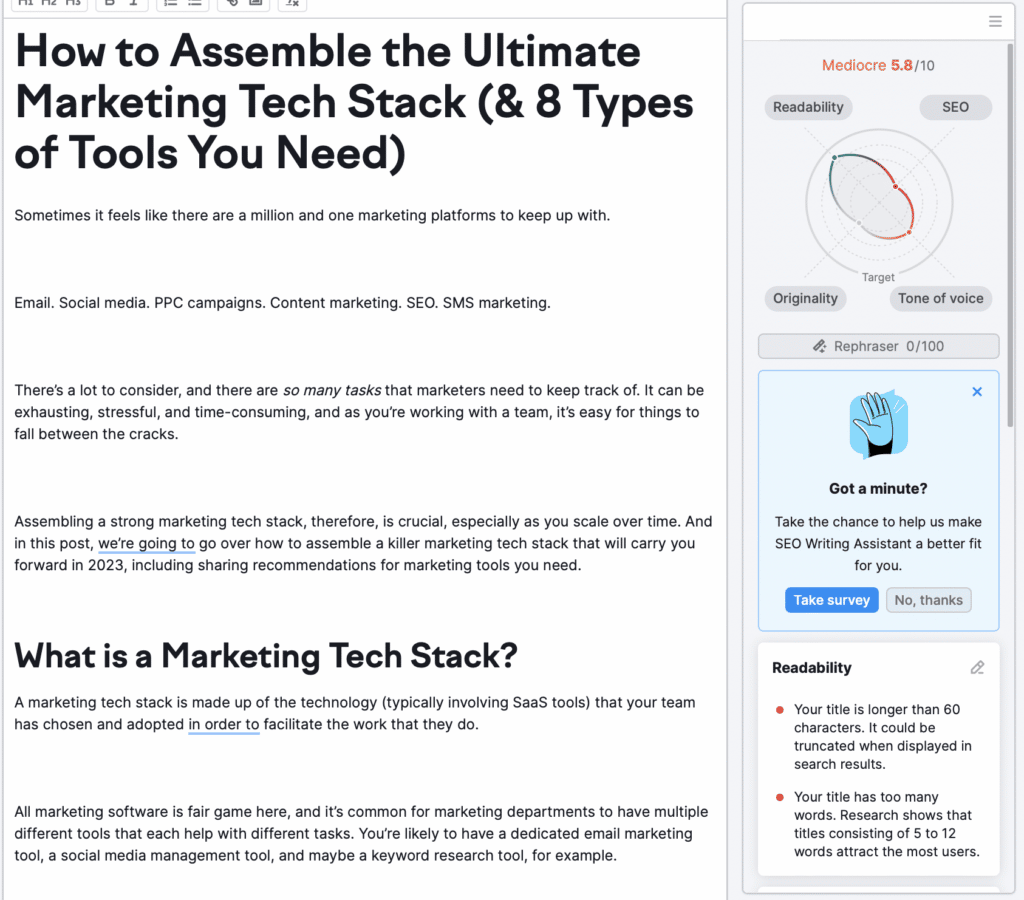
And in addition to running analytics on your own site, you can also use it to keep an eye on what your competition is doing, too.
Graphic design software can be a game changer for marketers, especially since many marketing teams don’t have the budget to hire an expert graphic designer for every single social media post or featured blog image that they need to create.
There are plenty of options on the market, but for many brands, finding a drag-and-drop tool with plenty of templates or an intuitive one-click approach to design, like Colorcinch, is a great choice. Just make sure you choose a plan without branded watermarks on it.
Snappa is my favorite graphic design tool as a non-graphic designer. It’s got the drag-and-drop technology mentioned above and over a hundred different templates for everything ranging from Facebook Ads to ebook covers. It’s easy to use and comes with all the features you need if you aren’t working with a professional designer.
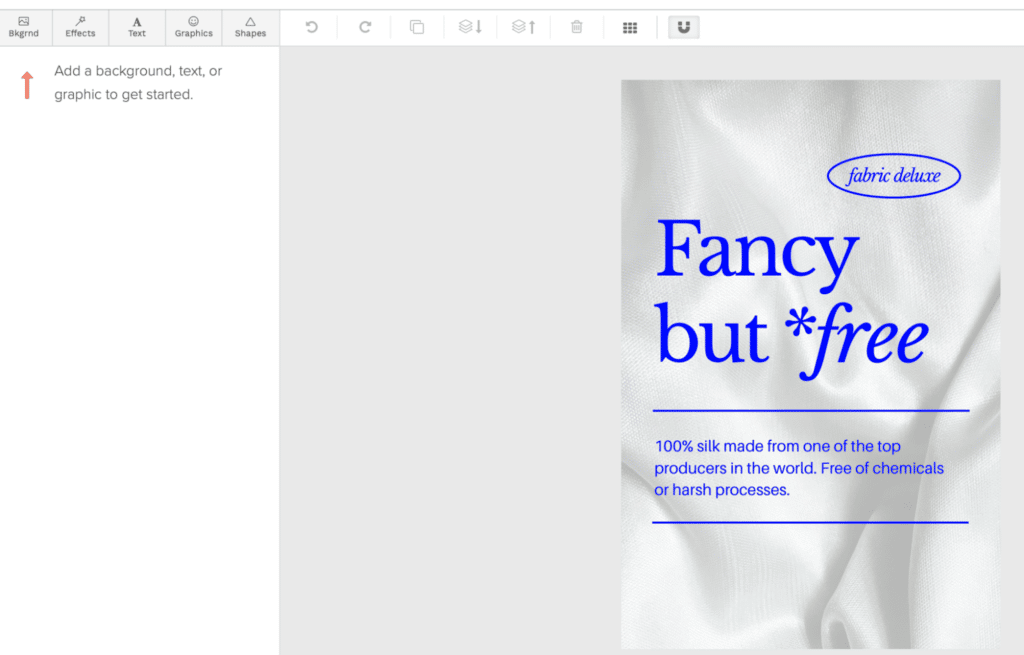
Landing page tools can help you build, test, and optimize landing pages at scale. The “testing” part of landing page creation is a particularly big bonus, which is harder to do if you’re creating pages on your site without a landing page builder.
Many strong landing page builders today also come with a large number of templates you can choose from based on the type of landing page you’re creating or even the stage of the sales funnel the user will be at when seeing it.
Unbounce is my go-to for landing page testing, optimization, and creation. They have an enormous amount of templates, or you can start from scratch, and you can easily create different variations of the same page for advanced testing.
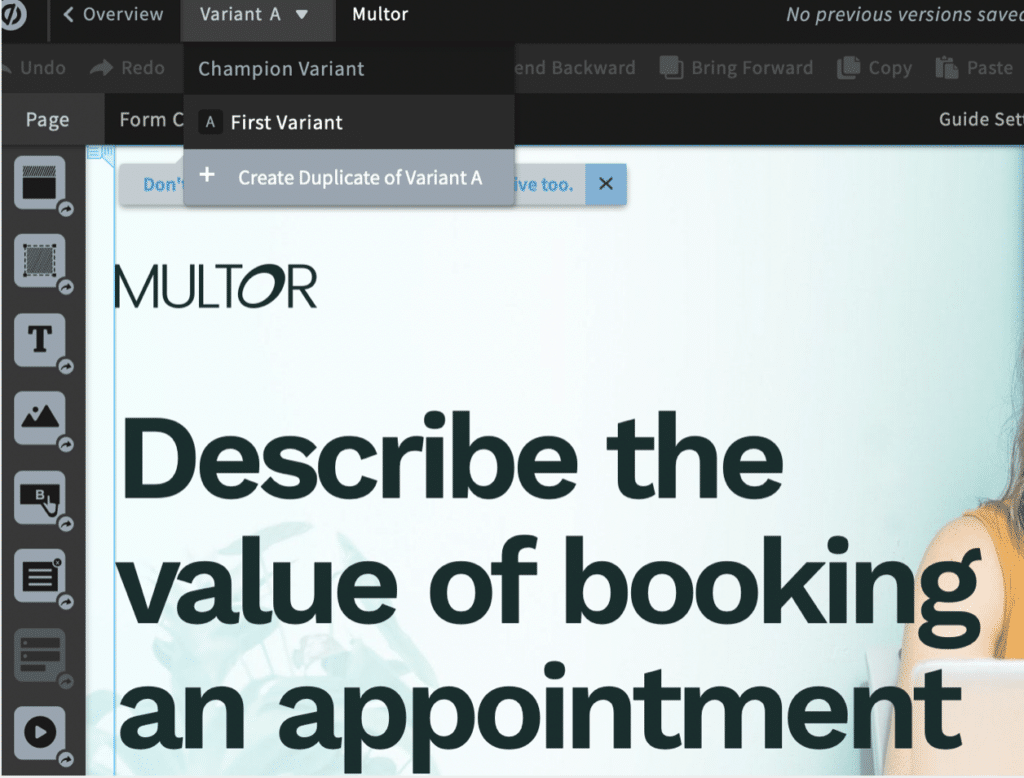
Unbounce also has amazing features that can help automate your landing page to truly optimize performance thanks to artificial intelligence (AI). It will detect which version of your landing page will perform best for each individual user.
Account-based marketing platforms come in a large number of shapes and sizes, but this category includes any tool that’s designed to help you excel with account-based marketing (or marketing to individual, high-value potential clients).
We actually have a solid list of account-based marketing tools that we love, but you can’t go wrong with Terminus.
Terminus was designed to be an account-based marketing tool, and it’s a great choice. They have a ton of data to help you determine which companies are researching products like yours to indicate high-intent opportunities. It also offers engagement-focused features to keep these users engaged through all the big platforms, including your site, live chat, email, and ads.

As you’re choosing different tools for your marketing tech stack, remember to keep the following criteria in mind:
Your marketing tech stack can absolutely impact your overall marketing success. Access to automation, detailed analytics, and advanced features to help you reach your audience more effectively can make huge changes for your business. And with better and higher quantities and qualities of leads coming through the door; as a result, your sales team is sure to be happy, too.
Ready to get started with your marketing tech stack? Start with Reveal! Sign up for your free account with Breadcrumbs today.